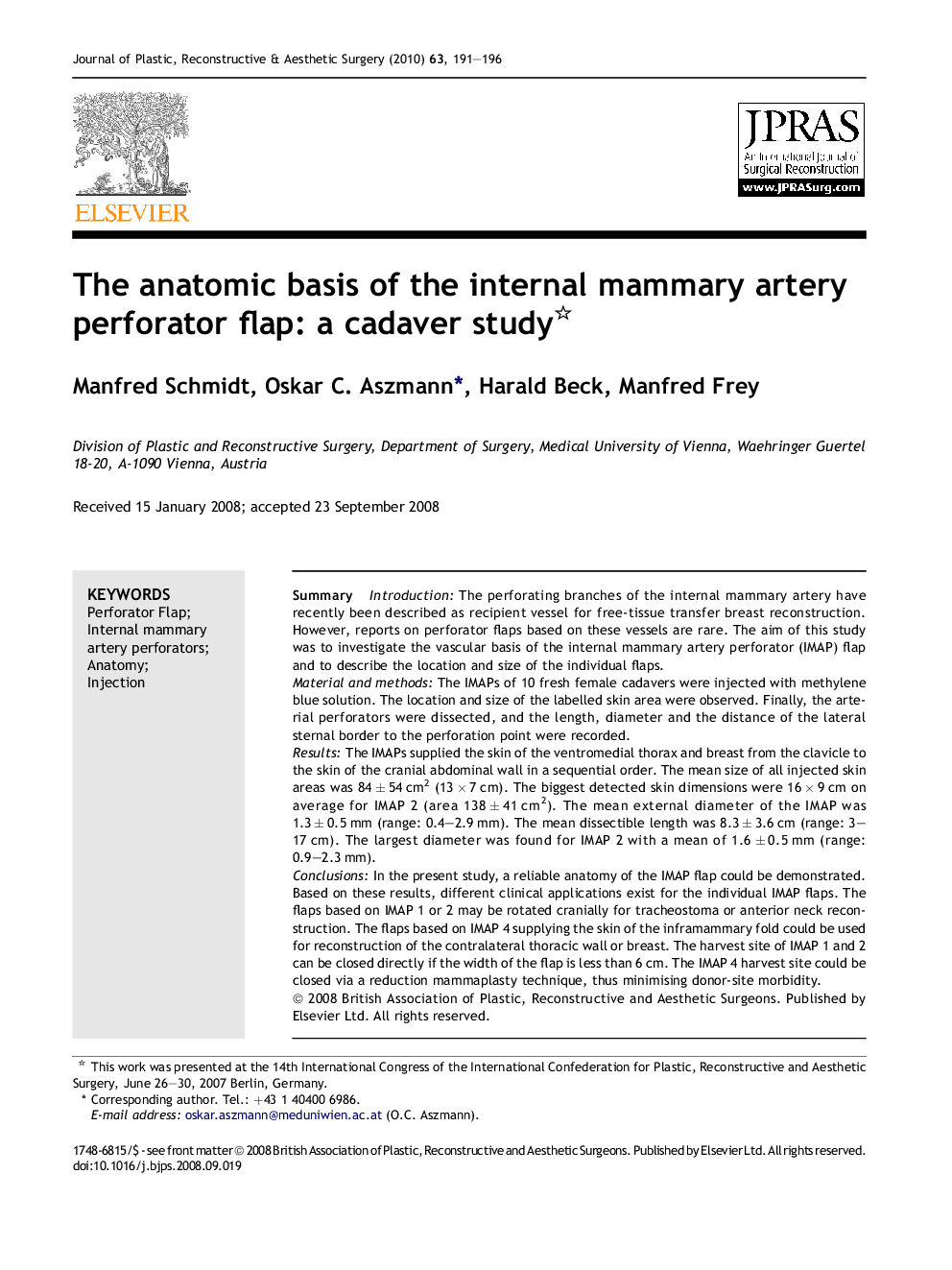| Article ID | Journal | Published Year | Pages | File Type |
|---|---|---|---|---|
| 4120156 | Journal of Plastic, Reconstructive & Aesthetic Surgery | 2010 | 6 Pages |
SummaryIntroductionThe perforating branches of the internal mammary artery have recently been described as recipient vessel for free-tissue transfer breast reconstruction. However, reports on perforator flaps based on these vessels are rare. The aim of this study was to investigate the vascular basis of the internal mammary artery perforator (IMAP) flap and to describe the location and size of the individual flaps.Material and methodsThe IMAPs of 10 fresh female cadavers were injected with methylene blue solution. The location and size of the labelled skin area were observed. Finally, the arterial perforators were dissected, and the length, diameter and the distance of the lateral sternal border to the perforation point were recorded.ResultsThe IMAPs supplied the skin of the ventromedial thorax and breast from the clavicle to the skin of the cranial abdominal wall in a sequential order. The mean size of all injected skin areas was 84 ± 54 cm2 (13 × 7 cm). The biggest detected skin dimensions were 16 × 9 cm on average for IMAP 2 (area 138 ± 41 cm2). The mean external diameter of the IMAP was 1.3 ± 0.5 mm (range: 0.4–2.9 mm). The mean dissectible length was 8.3 ± 3.6 cm (range: 3–17 cm). The largest diameter was found for IMAP 2 with a mean of 1.6 ± 0.5 mm (range: 0.9–2.3 mm).ConclusionsIn the present study, a reliable anatomy of the IMAP flap could be demonstrated. Based on these results, different clinical applications exist for the individual IMAP flaps. The flaps based on IMAP 1 or 2 may be rotated cranially for tracheostoma or anterior neck reconstruction. The flaps based on IMAP 4 supplying the skin of the inframammary fold could be used for reconstruction of the contralateral thoracic wall or breast. The harvest site of IMAP 1 and 2 can be closed directly if the width of the flap is less than 6 cm. The IMAP 4 harvest site could be closed via a reduction mammaplasty technique, thus minimising donor-site morbidity.
